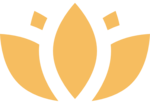

Yoga Styles: Pranayama
प्रच्छर्दनविधारणाभ्यां वा प्राणस्य॥३४॥
Pracchardanavidhāraṇābhyāṁ vā prāṇasya||34||
Or this calmness is achieved by the controlled exhalation or retention of breath
~ Patanjali Yoga Sutra 1.34
Understanding Pranayama
In the Yoga Sutras, Patanjali describes pranayama as the expansion or control of prana, which we experience through our breathing. Our mind and prana (our breath) are closely intertwined. Where our mind goes, prana follows, and by regulating prana, we can regulate our mind.
The Meaning of Pranayama
The word "pranayama" is comprised of two roots: prana and ayama.
Prana: This means 'vital energy' or 'life force'. It is the force that exists in all things, whether alive or lifeless. While closely related to the air we breathe, prana is subtler than air or oxygen. Through pranayama, we use our breath to direct the flow of prana in the nadis, or astral tubes, of the pranamaya kosha, our energy body.
Ayama: This means 'extension' or 'expansion'. Thus, pranayama means 'expansion of the dimension of prana'. Pranayama techniques provide methods to activate and regulate this life force, allowing us to transcend our normal boundaries and reach higher states of vibratory energy.
Our 50 hours Pranayama Training offers a comprehensive curriculum designed to deepen your understanding and practice of pranayama. You'll learn to harness the power of your breath to achieve greater control over your mind and energy.

Experience this transformative training in the serene and beautiful surroundings of Bali, just two minutes from the beach. This idyllic location provides the perfect backdrop for your journey into the deeper aspects of yoga and breathwork. Join us for this unique opportunity to expand your practice, regulate your life force, and achieve a higher state of energy. Whether you aim to teach or simply deepen your personal practice, this Pranayama training will empower and inspire you.
Before starting with Pranayama we will discover different breathing techniques to experience their differences and learn how to combine them in the yogic breath.
Breathing Awareness: is the foundation of pranayama practice.
Diaphragmatic Breathing: Also known as abdominal breathing, focuses on engaging the diaphragm to maximize lung capacity and improve oxygen exchange.
Chest breathing: Involves expanding the ribcage to draw air into the middle lobes of the lungs.
Collar breathing: Or clavicular breathing, focuses on the upper part of the lungs and involves raising the collarbones and shoulders to draw air in.
Yogic breath: Or complete breath, combines diaphragmatic, chest, and collar breathing into a harmonious and balanced breath cycle.
Every day we will practice different pranayama techniques. By taking more time during the day to breathe you get the chance to experience the various effects of these techniques.
In this 50 hours pranayama Training in Bali will cover the following Pranayama techniques and their variations with breath retention:
~ Nadi Shodhana
~ Surya Bhedi
~ Chandra bhedi
~ Bhramari
~ Bhastrika
~ Sheetali
~ Sheetkari
~ Ujjayi
To purify your body prior to the practice of pranayama we will perform shatkarma, including jalneti, nauli, kapalbhati and trataka.
In our 50 hours pranayama theory classes, you will delve into the fundamental concepts of pranayama, understanding its purpose and significance in the practice of yoga.
This includes:
Yogic Anatomy: Explore yogic anatomy, including the nadis and energy channels within the human body. Understanding the pancha pranas (five vital airs) and pancha koshas (five sheaths) will help you comprehend how pranayama influences your astral body.
Mudras: You will learn how to effectively incorporate different mudras to enhance your pranayama experience.
Sitting Postures: We will teach you the best sitting postures for pranayama practice, emphasizing comfort and stability.
Benefits and Precautions: Study the numerous benefits of pranayama and the precautions necessary for a safe and effective practice. This knowledge ensures you and your students can practice pranayama safely.
Special Topics: Learn how to use pranayama as a therapeutic tool for managing anxiety and depression.
Our teaching methodology sessions comprise
~ Where and how to practice
~ Time of practice
~ How to design an pranayama class
~ Sequencing of Pranayama techniques
~ Key aspects of Pranayama teaching
~ Respiratory System
~ Cardiovascular System
~ Nervous System
Bandhas, or energy locks, are crucial techniques in pranayama that help control and direct the flow of prana (life force) within the body. Mastering these locks is essential for deepening your pranayama practice and achieving greater control over your energy.
Types of Bandhas
In this Pranayama course, you will practice and learn about the three primary bandhas and the advanced Maha Bandha:
Mula Bandha (Root Lock)
Uddiyana Bandha (Abdominal Lock)
Jalandhara Bandha (Throat Lock)
Maha Bandha (The Great Lock)
We will teach you how to incorporate these bandhas effectively during your pranayama practice. We will provide practical guidance to ensure you understand the correct engagement and release of each bandha, including the advanced Maha Bandha.

Before joining Anandam Yoga School’s 50 hours Pranayama Training in Indonesia Course, you have to fulfill this eligibility criteria.

The time schedule is not fixed and can change according to location, teacher availability, weather conditions, and general situation
Venue: Indonesia